
The Rock Drawings in Valcamonica, located in the province of Brescia, Italy, are one of the largest collections of prehistoric petroglyphs in the world. These carvings, which date back to approximately 8,000 BCE, span a period of about 8,000 years and provide a comprehensive record of the evolution of human culture in the region. The drawings depict a variety of scenes including daily life, religious rituals, and symbolic imagery, offering insights into the spiritual and social practices of the ancient inhabitants. Recognized as a UNESCO World Heritage Site.
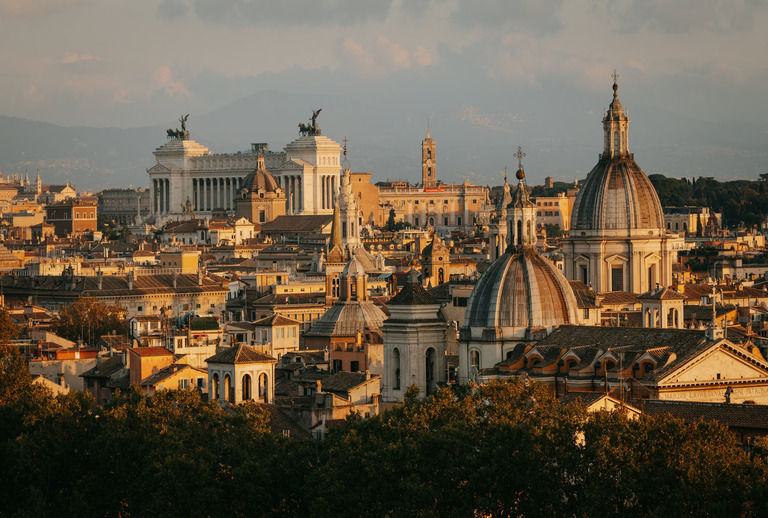
The Historic Centre of Rome, a UNESCO World Heritage Site, encompasses a wealth of archaeological and artistic treasures spanning over two millennia. Key landmarks include the Colosseum, the Roman Forum, the Pantheon, and Vatican City with St. Peter’s Basilica and the Sistine Chapel. This area reflects the cultural, architectural, and historical layers of ancient Rome, the Renaissance, and the Baroque period, showcasing Rome’s significance as a center of the Roman Empire and its enduring influence on Western civilization.
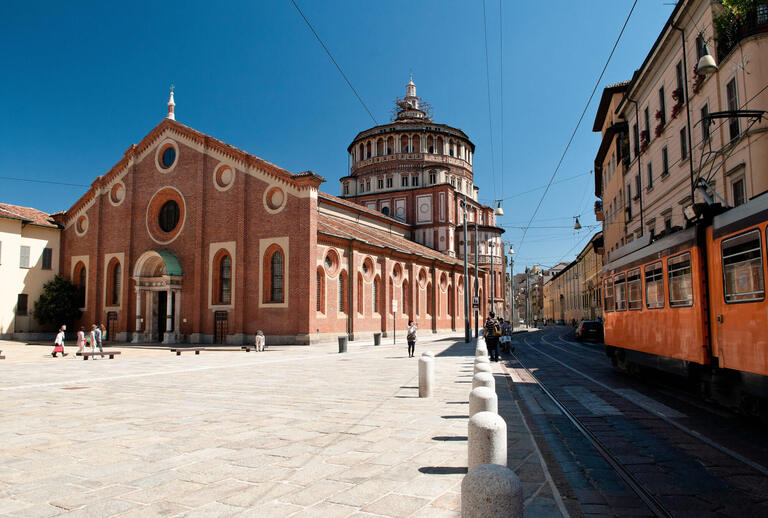
Santa Maria delle Grazie is a renowned church and Dominican convent in Milan, Italy. It is famous for housing Leonardo da Vinci’s iconic mural, “The Last Supper,” which is located in the convent’s refectory. Built between 1463 and 1497, the church is an exemplary piece of Renaissance architecture, designed by Guiniforte Solari and later modified by Bramante. The site is a UNESCO World Heritage Site, celebrated for its historical and artistic significance.
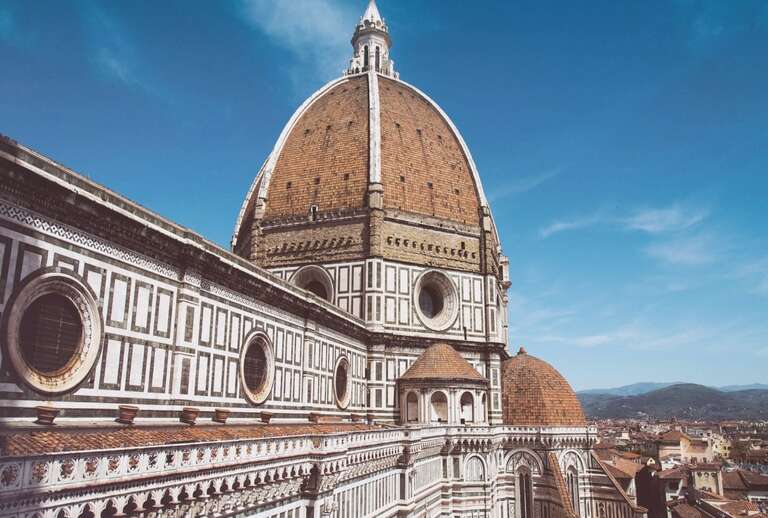
The Historic Centre of Florence, located in Florence, Italy, is a UNESCO World Heritage site renowned for its rich cultural heritage and architectural marvels. The area is a testament to the city’s Renaissance history, featuring iconic landmarks such as the Florence Cathedral with its magnificent dome designed by Brunelleschi, the Uffizi Gallery housing masterpieces by artists like Michelangelo and Botticelli, and the Ponte Vecchio, a medieval stone bridge lined with jewelry shops. The historic centre is also home to the Palazzo Vecchio, the Basilica of Santa Croce, and numerous piazzas, offering a glimpse into Florence’s past as a major hub of art, architecture, and learning.
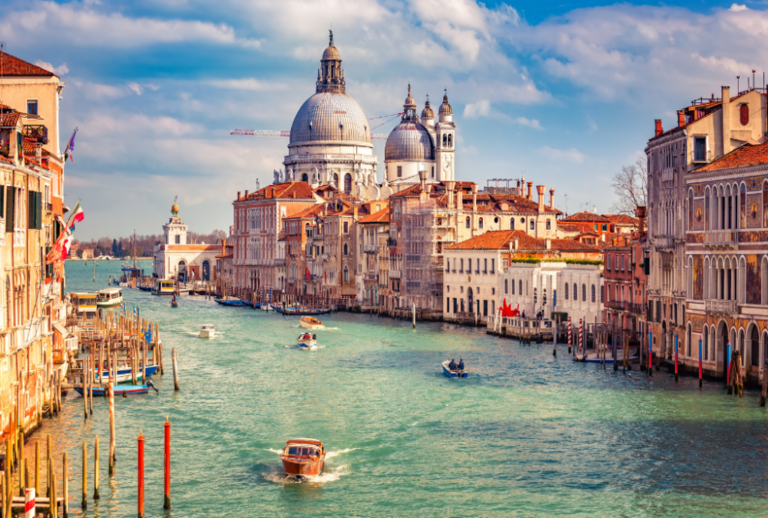
Venice and its Lagoon, located in northeastern Italy, is a unique and historically significant region, recognized as a UNESCO World Heritage Site. Venice, known as the “City of Canals,” is built on a network of 118 small islands separated by canals and connected by bridges. This iconic city, famous for its stunning architecture, art, and culture, emerged as a powerful maritime republic in the Middle Ages and the Renaissance.

Piazza del Duomo, also known as Cathedral Square, is a renowned historical site in Pisa, Italy. It is famous for its remarkable ensemble of medieval architecture, including the Pisa Cathedral, the Baptistery, the Campanile (Leaning Tower of Pisa), and the Camposanto Monumentale. The square is a UNESCO World Heritage Site, celebrated for its significant cultural and artistic contributions during the medieval period. The Leaning Tower, with its distinctive tilt, is the most iconic structure, attracting millions of tourists worldwide.

The Historic Centre of San Gimignano, located in the province of Siena, Italy, is a UNESCO World Heritage Site renowned for its well-preserved medieval architecture and towers. The town, often called the “Medieval Manhattan,” features 14 of the original 72 tower houses, which were built by noble families as symbols of their wealth and power. San Gimignano’s historic center also includes beautiful Romanesque and Gothic buildings, such as the Collegiate Church of Santa Maria Assunta and the Palazzo Comunale, which houses a museum with frescoes and artwork.
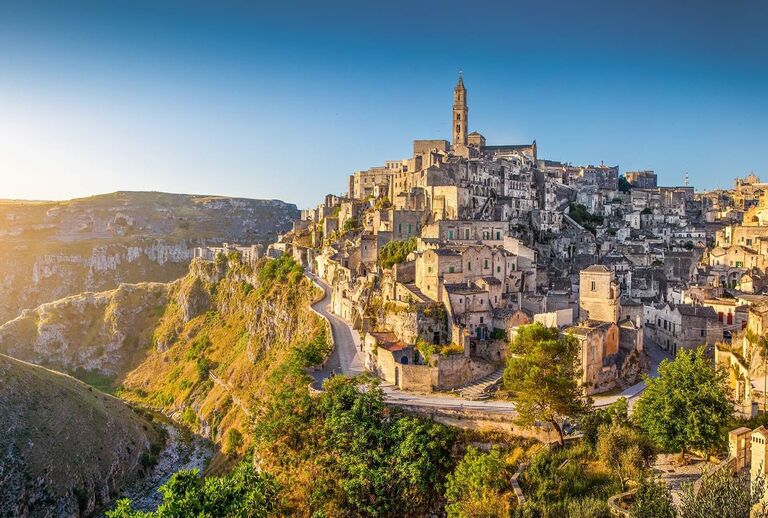
The Sassi di Matera, located in Matera, Italy, are ancient cave dwellings carved into limestone cliffs. These structures date back to prehistoric times and have been continuously inhabited, showcasing a unique blend of history and architecture. The Sassi are divided into two districts, Sasso Caveoso and Sasso Barisano, and feature narrow winding streets, rock-hewn churches, and historical homes.
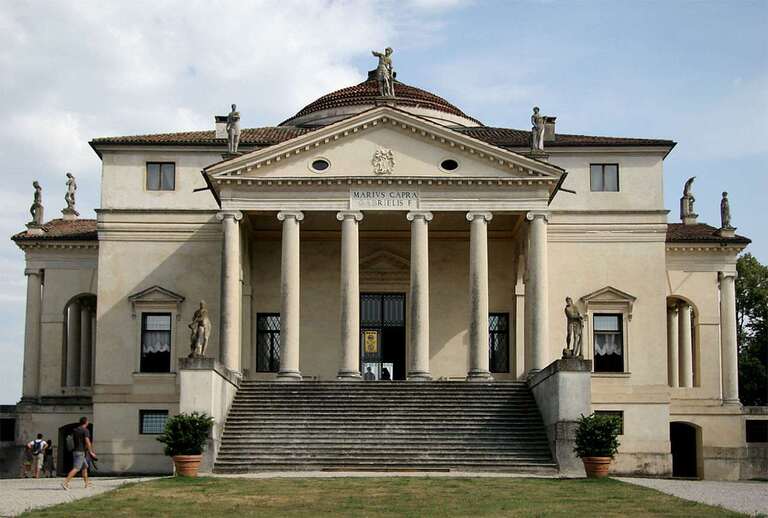
The City of Vicenza and the Palladian Villas of the Veneto, located in the Veneto region of Italy, are celebrated for their architectural significance. Vicenza, renowned as the “City of Palladio,” showcases the work of the influential Renaissance architect Andrea Palladio. His innovative designs, characterized by classical Roman principles and harmonious proportions, are evident in numerous buildings throughout the city.
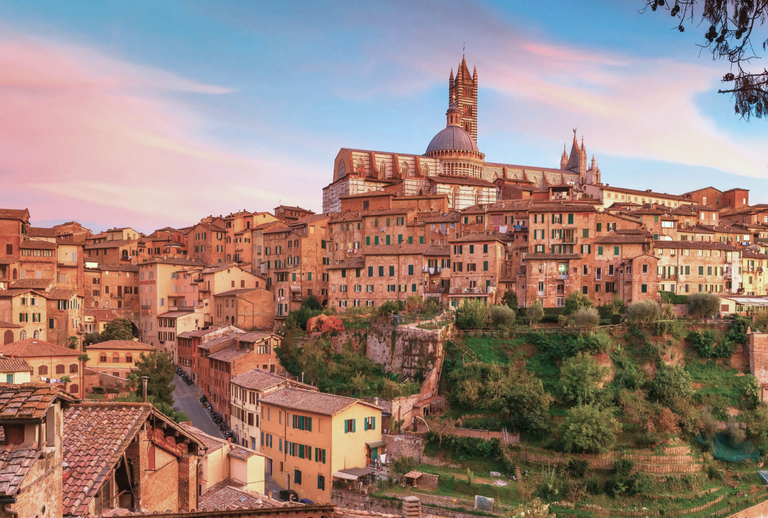
The Historic Centre of Siena, located in Siena, Italy, is a UNESCO World Heritage Site renowned for its well-preserved medieval architecture and cityscape. The heart of the city is the Piazza del Campo, a unique shell-shaped square that hosts the famous Palio horse race twice a year. Dominating the piazza is the Palazzo Pubblico and its Torre del Mangia, offering panoramic views.
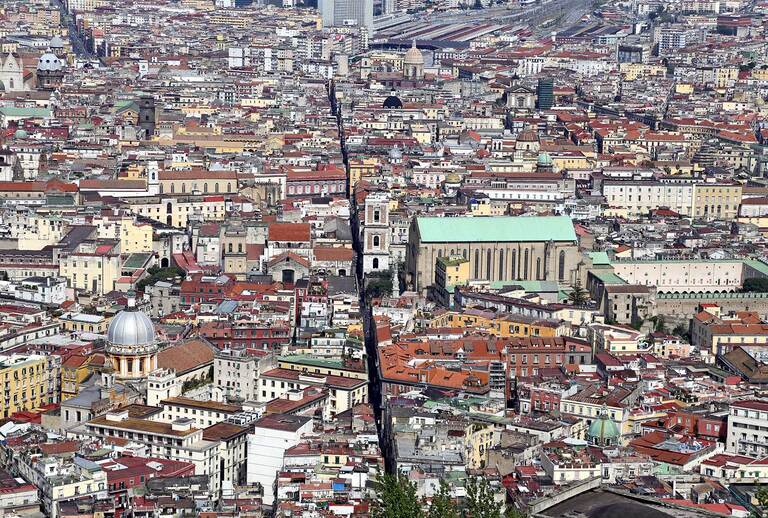
The Historic Centre of Naples, located in Naples, Italy, is a UNESCO World Heritage Site renowned for its rich history, stunning architecture, and vibrant cultural heritage. Dating back to ancient times, this historic area boasts an impressive array of landmarks, including ancient Greek and Roman ruins, medieval castles, and Baroque churches.

Crespi d’Adda is a unique UNESCO World Heritage Site located in the province of Bergamo, Italy. It’s a well-preserved industrial village built in the late 19th and early 20th centuries, showcasing the industrial revolution’s impact on urban planning and workers’ living conditions. Designed to accommodate factory workers of the nearby textile mill, Crespi d’Adda features rows of workers’ houses, a school, a hospital, a church, and other communal facilities.
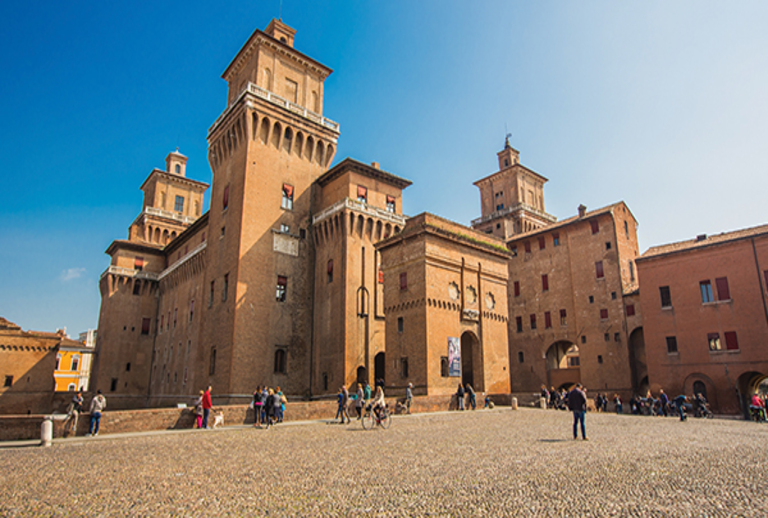
Ferrara, often hailed as the “City of the Renaissance,” is a captivating gem nestled in the Emilia-Romagna region of northern Italy. This enchanting city boasts a rich cultural heritage and stunning architectural marvels dating back to the Renaissance period. At the heart of Ferrara lies its meticulously preserved historic center, a UNESCO World Heritage Site since 1995.
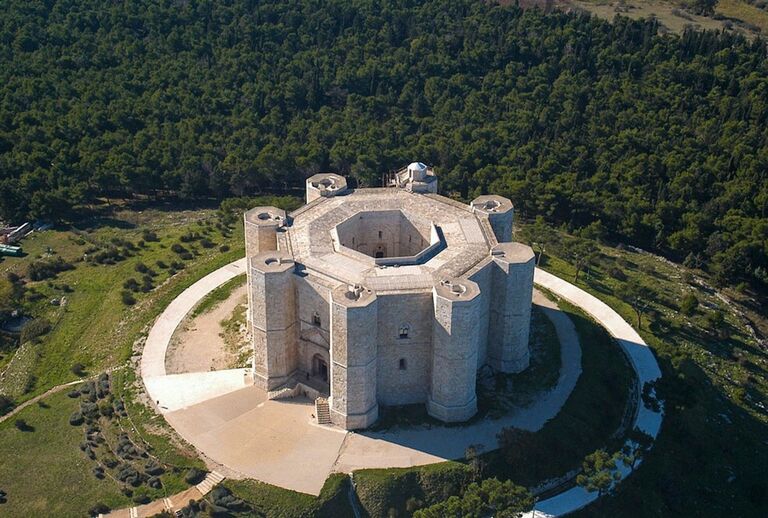
Castel del Monte, nestled in the province of Barletta-Andria-Trani in Italy, is a UNESCO World Heritage Site renowned for its unique octagonal shape and mysterious history. Built in the 13th century by Emperor Frederick II, its purpose remains a subject of debate among historians. Some speculate it was a hunting lodge or a symbol of power, while others suggest it held mystical or astronomical significance.
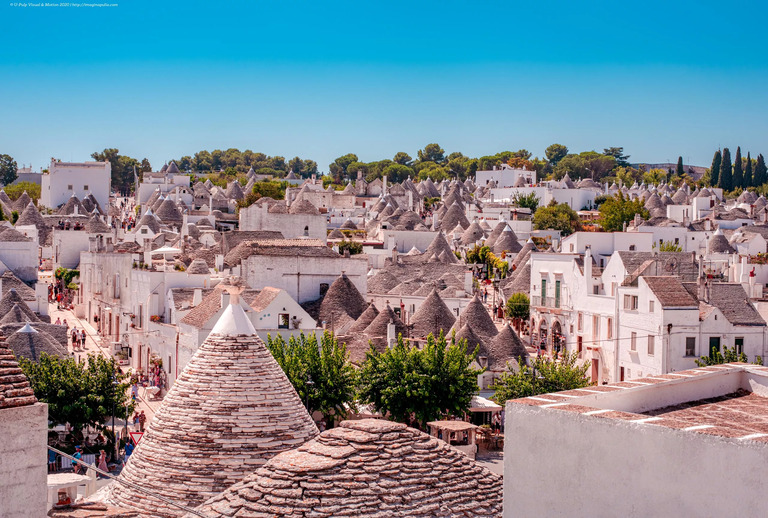
The Trulli of Alberobello in Bari, Italy, are a unique and picturesque sight. These traditional Apulian dry stone huts with conical roofs date back to the 14th century and are now a UNESCO World Heritage Site. The Trulli create a charming, fairytale-like atmosphere as they cluster together in the town’s narrow streets, offering visitors a glimpse into the region’s rich history and architectural heritage.

Ravenna, Italy, boasts a remarkable collection of early Christian monuments, recognized for their historical and artistic significance. These monuments include several UNESCO World Heritage Sites, such as the Basilica of San Vitale, adorned with stunning Byzantine mosaics depicting biblical scenes and imperial figures. The Mausoleum of Galla Placidia, renowned for its intricate mosaic work, and the Baptistry of Neon, one of the oldest Christian baptisteries in existence, are also noteworthy landmarks.
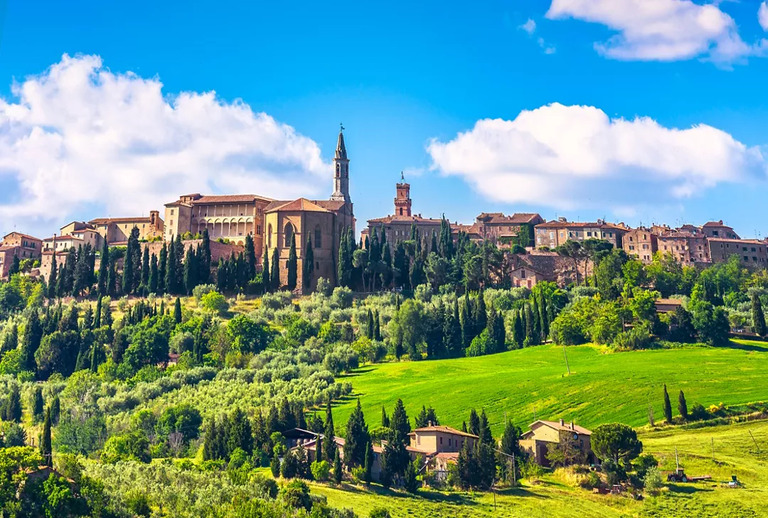
The Historic Centre of the City of Pienza, located in Siena, Italy, is a UNESCO World Heritage Site renowned for its harmonious Renaissance architecture and urban layout. Constructed in the 15th century under the patronage of Pope Pius II, Pienza is a prime example of Renaissance town planning, with its well-preserved buildings, picturesque squares, and elegant palaces.

The Royal Palace at Caserta stands as a breathtaking symbol of opulence and grandeur in southern Italy. Built in the 18th century for the Bourbon kings of Naples, it rivals the Palace of Versailles in size and magnificence. Designed by architect Luigi Vanvitelli, its sprawling gardens, lavish interiors, and immense dimensions make it one of the most impressive royal residences in Europe.

The Royal House of Savoy, one of Italy’s most prominent noble families, has left an indelible mark on the architectural landscape of Turin and Cuneo. In Turin, the Palazzo Reale stands as a testament to their influence, boasting grand halls adorned with opulent furnishings and exquisite artwork. Adjacent to the palace lies the Palazzo Madama, a stunning example of Baroque architecture that once served as the seat of the Italian Senate.

The Botanical Garden, or Orto Botanico, in Padua, Italy, is a captivating oasis of biodiversity and botanical heritage. Established in 1545, it holds the distinction of being the oldest university botanical garden in the world that is still in its original location. Steeped in history and scientific significance, this lush sanctuary spans over 22,000 square meters and features an impressive array of plant species from around the globe.
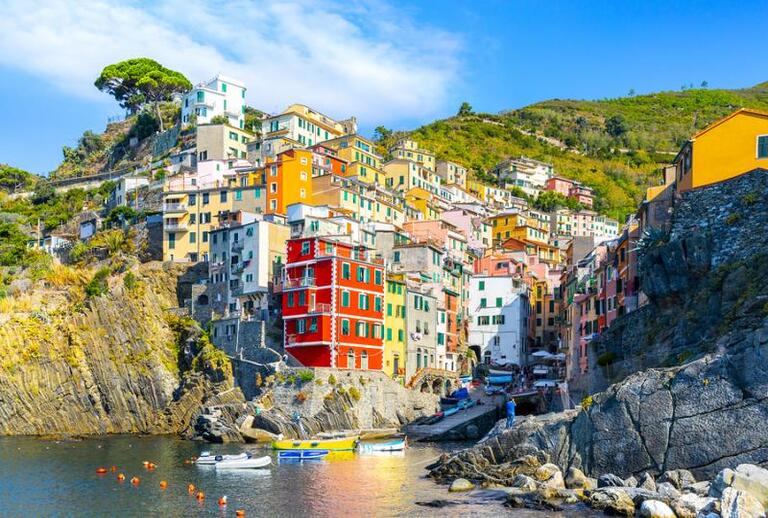
Nestled along the rugged coastline of Liguria, Italy, lies the enchanting region of La Spezia, home to the picturesque Portovenere and the renowned Cinque Terre, comprised of five colorful fishing villages perched on cliffs overlooking the Ligurian Sea. Portovenere charms visitors with its pastel-hued houses, medieval castle, and the iconic Church of St. Peter, set against the backdrop of towering cliffs.
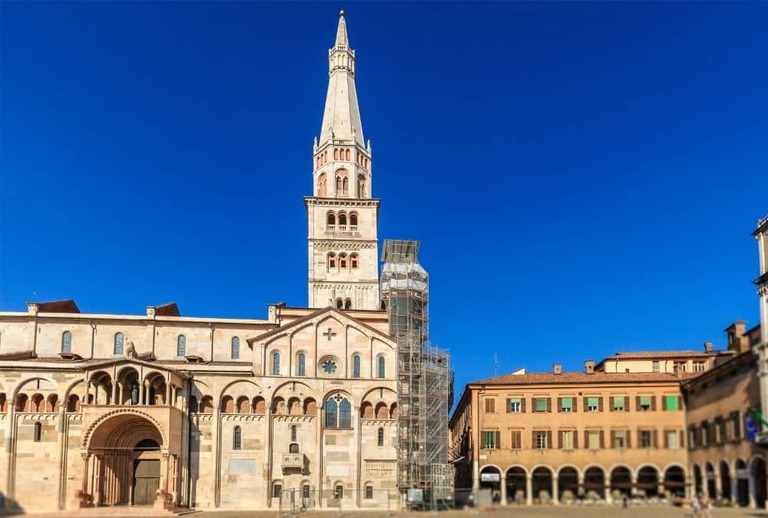
Modena, Italy, boasts a rich cultural heritage, epitomized by its iconic landmarks. The Cathedral of Modena, a UNESCO World Heritage Site, stands as a stunning example of Romanesque architecture, adorned with intricate sculptures and elegant rose windows. Adjacent to the Cathedral lies the Torre Civica, a medieval tower that offers panoramic views of the cityscape.
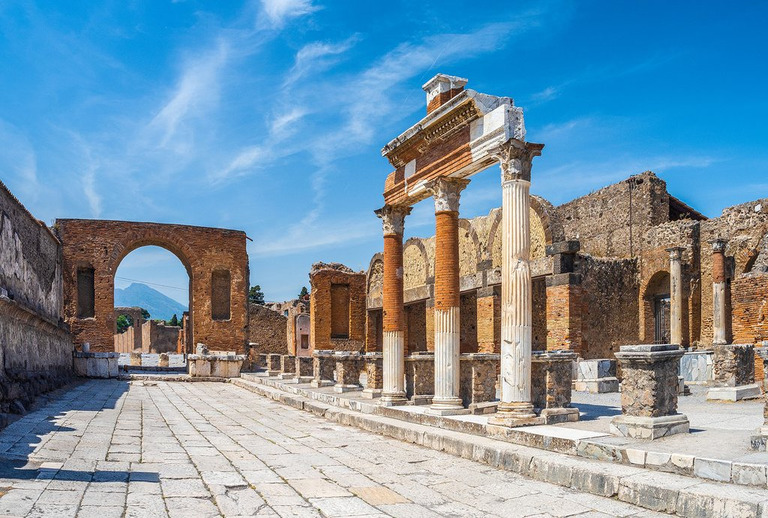
The Archaeological Areas of Pompeii, Herculaneum, and Torre Annunziata in Naples, Italy, are captivating windows into the past, frozen in time by the catastrophic eruption of Mount Vesuvius in 79 AD. Pompeii, the most renowned of the three, offers a remarkable glimpse into ancient Roman life, with its well-preserved streets, houses, and public buildings.
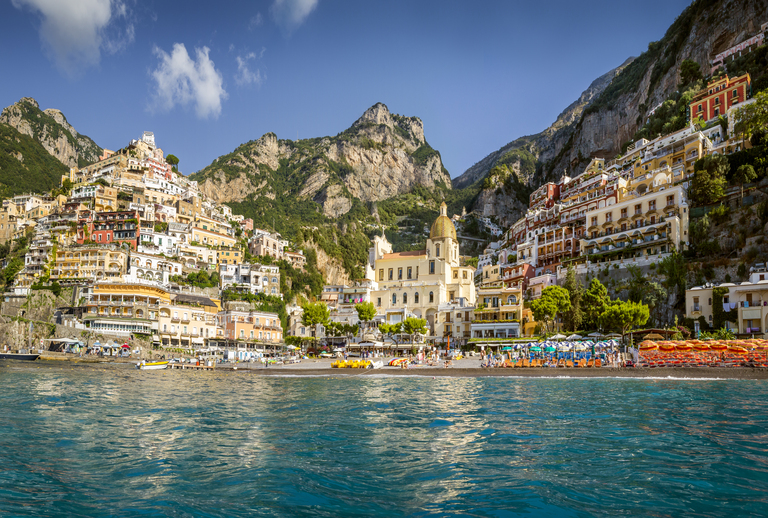
The Amalfi Coast, also known as Costiera Amalfitana, is a breathtaking stretch of coastline located in the province of Salerno, Italy. Renowned for its stunning beauty, picturesque towns clinging to rugged cliffs, and azure waters, the Amalfi Coast is a UNESCO World Heritage Site that attracts travelers from around the globe. The charming towns along the coast, including Amalfi, Positano, and Ravello, offer a blend of medieval architecture, colorful buildings, and narrow streets lined with boutiques and cafes.
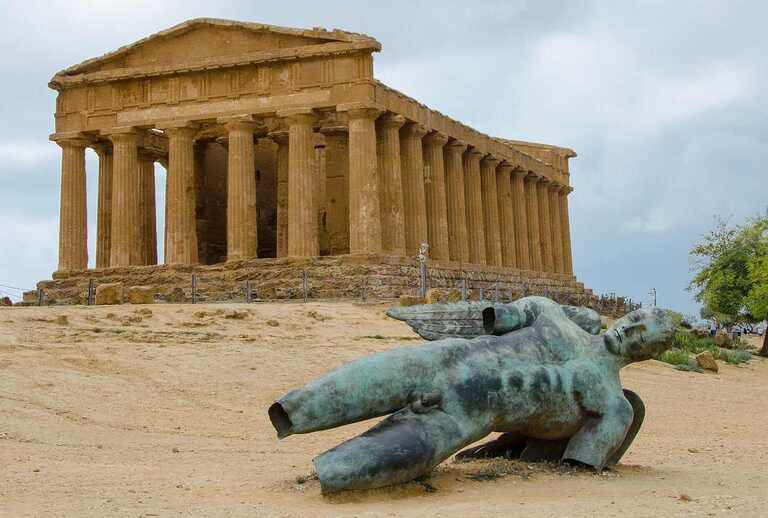
The Archaeological Area of Agrigento, located in Agrigento, Sicily, is a UNESCO World Heritage Site renowned for its well-preserved ancient Greek temples and ruins. Known as the Valley of the Temples, this expansive site showcases some of the most extraordinary remnants of Magna Graecia, including the impressive Temple of Concordia, one of the best-preserved Greek temples in the world.
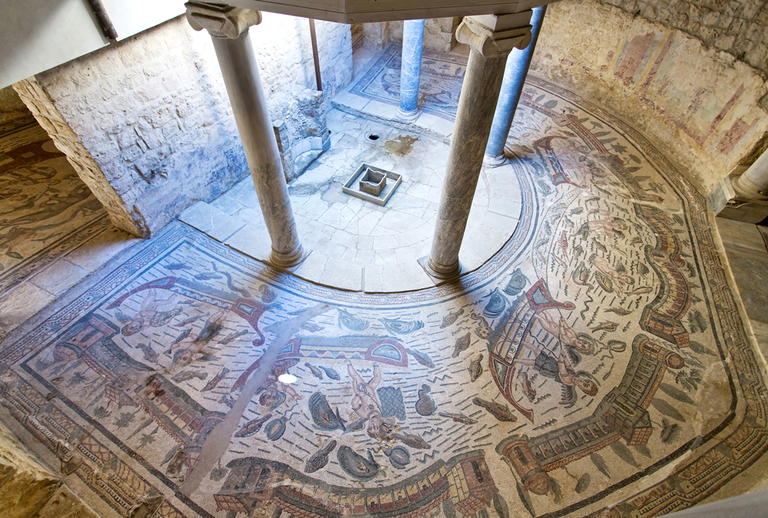
Villa Romana del Casale, located near Piazza Armerina in Enna, Sicily, is a UNESCO World Heritage site renowned for its extensive and exceptionally well-preserved Roman mosaics. Dating back to the late 3rd and early 4th centuries AD, the villa showcases the opulence of Roman aristocracy through its intricate and colorful floor mosaics that depict a wide range of subjects, from mythological scenes and hunting expeditions to everyday life and geometric patterns.

Su Nuraxi di Barumini, located in South Sardinia, Italy, is a prehistoric archaeological site and a prime example of the island’s distinctive nuragic civilization. Dating back to the 17th century BCE, this UNESCO World Heritage site features a well-preserved nuraghe—a large, central stone tower surrounded by a complex of additional towers, defensive walls, and village structures.
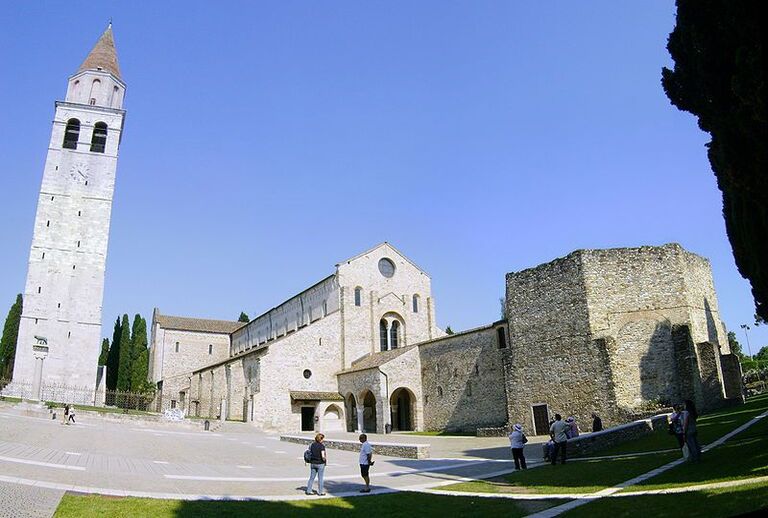
The Patriarchal Basilica of Aquileia, located in Udine, Italy, is a historically significant church renowned for its rich heritage and architectural grandeur. Originally established in the 4th century, the basilica has undergone various renovations, reflecting a blend of early Christian, Romanesque, and Gothic styles. It is particularly noted for its stunning mosaic floor, which dates back to the early Christian period and is one of the largest and most well-preserved of its kind in Western Europe.
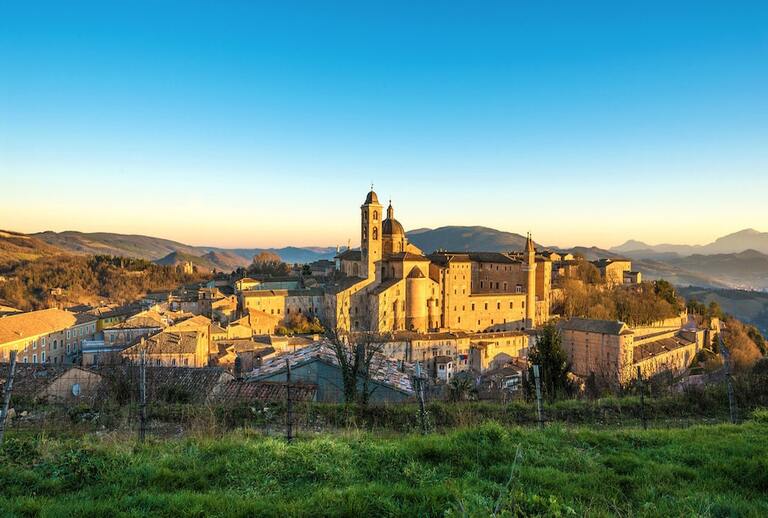
The Historic Centre of Urbino, located in the province of Pesaro and Urbino, Italy, is a remarkable example of Renaissance urban design and architecture. This UNESCO World Heritage site flourished in the 15th century under the patronage of Duke Federico da Montefeltro, who transformed it into a cultural and intellectual hub. The city is renowned for its well-preserved medieval and Renaissance buildings, including the Ducal Palace, which houses the National Gallery of the Marche.
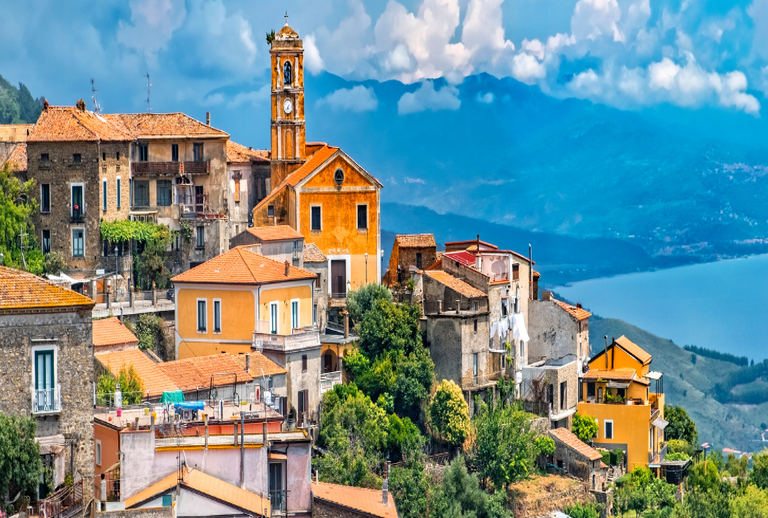
Cilento and Vallo di Diano National Park, located in the province of Salerno, Italy, is a UNESCO World Heritage site known for its rich biodiversity, stunning landscapes, and historical significance. Within this park lie the ancient Greek ruins of Paestum and Velia, which showcase well-preserved temples, amphitheaters, and city walls that reflect the area’s classical heritage.
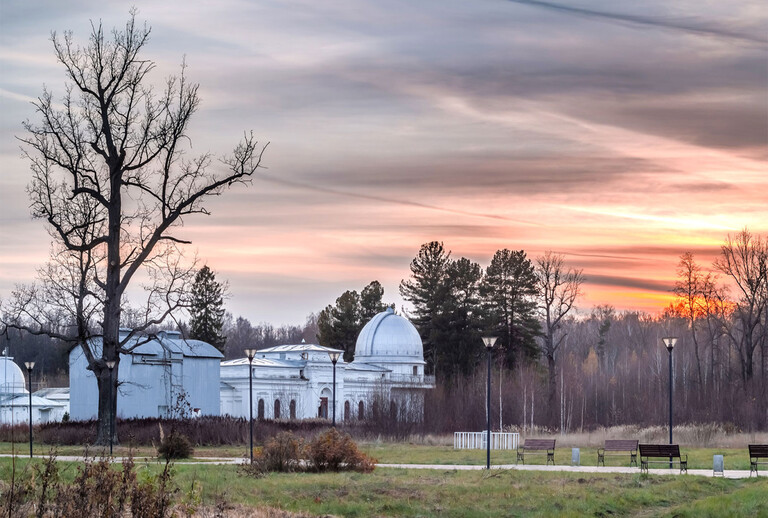
Villa Adriana, located in Tivoli near Rome, Italy, is an expansive Roman archaeological complex that was commissioned by Emperor Hadrian in the 2nd century AD. This luxurious retreat served as a sprawling imperial residence, embodying the architectural grandeur of ancient Rome. Covering over 250 acres, the villa complex features a remarkable array of structures, including palaces, temples, theaters, baths, and extensive gardens, all showcasing a blend of Roman, Greek, and Egyptian influences.

Verona, a historic city in northern Italy’s Veneto region, is renowned for its rich cultural heritage and stunning architecture. Famous as the setting for Shakespeare’s “Romeo and Juliet,” Verona boasts well-preserved ancient Roman structures, including the Verona Arena, a massive first-century amphitheater still in use today. The city’s charming medieval old town, with its picturesque piazzas, elegant palazzi, and the beautiful Adige River, draws visitors from around the globe.

The Isole Eolie, or Aeolian Islands, are a captivating volcanic archipelago located off the northeastern coast of Sicily, in the Tyrrhenian Sea. Part of the province of Messina, this group of islands includes seven main islands: Lipari, Vulcano, Stromboli, Salina, Filicudi, Alicudi, and Panarea. Known for their stunning landscapes, unique geological features, and rich history, the Aeolian Islands offer a mix of active volcanoes, such as those on Stromboli and Vulcano, and serene beaches with crystal-clear waters.

The Basilica of San Francesco in Assisi, located in Perugia, Italy, is a renowned UNESCO World Heritage Site, celebrated for its historical and religious significance. This grand basilica is dedicated to Saint Francis of Assisi, the founder of the Franciscan Order, and is a major pilgrimage destination. Constructed in the 13th century, it features exquisite Gothic architecture and houses the saint’s tomb.

Villa d’Este is a historic villa located in Tivoli, just outside of Rome, Italy. Renowned for its stunning Renaissance architecture and breathtaking gardens, it’s a UNESCO World Heritage Site. The villa is famous for its intricate terraced gardens, elaborate fountains, and water features, which are considered some of the finest examples of Italian Renaissance garden design. Built in the 16th century, Villa d’Este offers visitors a glimpse into the opulent lifestyle of the Italian aristocracy during the Renaissance period.

Val di Noto is a stunning region in southeastern Sicily, Italy, renowned for its rich history, Baroque architecture, and picturesque landscapes. It comprises several charming cities and towns, including Catania, Ragusa, and Syracuse. Catania, a bustling port city situated beneath the imposing Mount Etna, is known for its vibrant markets, historic landmarks such as the Baroque Cathedral of Saint Agatha, and its lively atmosphere.

The Sacri Monti of Piedmont and Lombardy are a group of nine sacred mountains dotted across northern Italy. These sites are renowned for their intricate chapels, shrines, and artworks, all reflecting the religious fervor of the Counter-Reformation period. Each mountain is dedicated to a specific theme or event from the Christian faith, and together they offer a unique blend of natural beauty and spiritual significance, attracting pilgrims and tourists alike.

Val d’Orcia is a picturesque region nestled in the province of Siena, Italy, renowned for its stunning landscapes, rolling hills, and charming medieval towns. Designated as a UNESCO World Heritage Site in 2004, it captivates visitors with its idyllic scenery dotted with vineyards, olive groves, and cypress trees. The area is celebrated for its timeless beauty, inspiring countless artists and photographers over the years.

The Etruscan Necropolises of Cerveteri and Tarquinia, located in Viterbo and Rome, Italy, respectively, are UNESCO World Heritage Sites. These ancient burial grounds offer a fascinating glimpse into the rich cultural and funerary practices of the Etruscan civilization, which thrived in central Italy before the rise of Rome. The necropolises are renowned for their elaborate tombs, many adorned with intricate frescoes depicting scenes from Etruscan life, mythology, and beliefs.

Syracuse, located on the southeastern coast of Sicily, Italy, is a historic city renowned for its rich cultural heritage and stunning natural landscapes. One of its most fascinating features is the nearby Rocky Necropolis of Pantalica, a UNESCO World Heritage Site. Pantalica is an ancient necropolis carved into the limestone cliffs, featuring thousands of rock-cut tombs dating back to the Bronze Age.

Genoa’s Le Strade Nuove and the system of the Palazzi dei Rolli, located in Genoa, Italy, comprise a UNESCO World Heritage site. This architectural ensemble features a network of streets lined with impressive palaces built in the 16th and 17th centuries. These palaces were designated as residences for hosting important guests during the city’s golden age as a maritime republic. The Palazzi dei Rolli system was a unique solution to accommodate the numerous dignitaries and officials who visited Genoa during that period.

The Rhaetian Railway in the Albula / Bernina region is a UNESCO World Heritage Site renowned for its stunning mountainous landscapes and remarkable engineering. Stretching from the Swiss canton of Graubünden to Sondrio in Italy, this narrow-gauge railway navigates through breathtaking scenery, including the Albula and Bernina Passes.

Mantua, often referred to as Mantova in Italian, is a historic city located in the Lombardy region of northern Italy. Known for its rich cultural heritage, Mantua boasts a wealth of artistic treasures, charming piazzas, and well-preserved Renaissance architecture. The city’s historic center, a UNESCO World Heritage Site, is characterized by its picturesque streets, elegant palaces, and impressive churches, including the majestic Mantua Cathedral.

The Dolomites in Italy are a breathtaking mountain range renowned for their distinctive jagged peaks, picturesque valleys, and vibrant alpine meadows. Designated as a UNESCO World Heritage Site, they offer unparalleled opportunities for outdoor adventures, including hiking, skiing, rock climbing, and mountain biking. The region also boasts charming villages with rich cultural heritage, delicious cuisine, and warm hospitality.

Monte San Giorgio, located in the Italian region of Varese, is renowned for its remarkable geological and paleontological significance. This UNESCO World Heritage Site boasts a wealth of fossil remains dating back to the Triassic period, around 240 million years ago. The mountain’s sedimentary rocks contain an exceptional record of marine life from the ancient Tethys Ocean, offering invaluable insights into the evolution of reptiles, fish, and other prehistoric creatures.

The Longobards, also known as the Lombards, were a Germanic people who ruled over large parts of Italy from 568 to 774 AD. During their reign, they established a significant presence in the Italian Peninsula, with their power centers scattered across the region. One of the most prominent Lombard strongholds was Pavia, which served as their capital for much of their rule. Other important Lombard cities included Milan, Verona, and Friuli.

The Prehistoric Pile Dwellings around the Alps in Italy are a collection of ancient settlements dating back to the Neolithic and Bronze Ages. These remarkable sites, located in the Alpine region of Italy, consist of wooden pile dwellings constructed on the edges of lakes, rivers, and marshes. The dwellings provide invaluable insights into the daily lives, social structures, and technological advancements of prehistoric communities.

The Medici Villas and Gardens in Tuscany, Italy, represent a remarkable blend of art, architecture, and landscape design, showcasing the wealth and cultural sophistication of the powerful Medici family during the Renaissance period. These villas, scattered throughout the Tuscan countryside, served as retreats and pleasure palaces for the Medici elites, featuring stunning gardens meticulously crafted to harmonize with the surrounding natural beauty.

Mount Etna, located near Catania, Italy, is one of the most active volcanoes in the world and the tallest in Europe. Its towering presence, reaching over 10,000 feet above sea level, dominates the surrounding landscape. Etna’s frequent eruptions, characterized by spectacular lava flows and ash emissions, have shaped the region’s history and geography for millennia. Despite its potential for destruction, the volcano also offers breathtaking views and fertile soil, attracting tourists and sustaining local agriculture.

Nestled in the picturesque region of Piedmont, Italy, the Vineyard Landscape of Langhe-Roero and Monferrato is a captivating tapestry of rolling hills adorned with vineyards, charming villages, and historic towns. Stretching across the provinces of Alessandria, Asti, and Cuneo, this UNESCO World Heritage Site is renowned for its breathtaking beauty and rich cultural heritage. The meticulously terraced vineyards produce some of Italy’s finest wines, including Barolo, Barbaresco, and Asti Spumante, making it a paradise for wine enthusiasts.

The Arab-Norman Palermo and the Cathedral Churches of Cefalù and Monreale in Palermo, Italy, represent a unique blend of architectural styles and cultural influences. Dating back to the 12th century, these sites bear testimony to the fruitful coexistence of Arab, Byzantine, Latin, and Norman cultures in Sicily. The Arab-Norman architectural style is characterized by its distinctive mix of Islamic and Western elements, reflecting the multicultural society of medieval Sicily.

The Ancient and Primeval Beech Forests of the Carpathians and Other Regions of Europe in Italy are exceptional ecosystems that have remained largely unchanged for millennia. These forests, located in various regions of Italy, including the Apennines and the Alps, are characterized by their ancient beech trees, which have survived through natural processes and human stewardship. The remarkable biodiversity within these forests supports a wide range of flora and fauna, contributing to the overall health and resilience of the ecosystem.

The Venetian Works of Defence between the 16th and 17th centuries encompass a remarkable network of fortifications strategically positioned across Italy, particularly in the regions of Bergamo, Udine, and Verona. These defensive structures, known as the Stato da Terra and the Western Stato da Mar, were vital to the Republic of Venice’s efforts to safeguard its territories from external threats during a tumultuous period in European history.

Ivrea, nestled in the picturesque Piedmont region of northern Italy, is a charming town with a rich historical heritage and breathtaking natural beauty. Famous for its annual Battle of the Oranges carnival, where locals and visitors engage in a lively citrus-slinging spectacle, Ivrea exudes a vibrant energy and a deep sense of tradition. The town’s ancient streets are adorned with elegant medieval architecture, including the imposing Ivrea Cathedral and the majestic Castello d’Ivrea, which offer glimpses into its storied past.

Nestled in the northeastern region of Italy, the Prosecco Hills of Conegliano and Valdobbiadene in Treviso boast a picturesque landscape celebrated for its breathtaking beauty and renowned sparkling wine. The undulating hills, adorned with vineyards that stretch as far as the eye can see, create a mesmerizing mosaic of greenery. This UNESCO World Heritage Site not only offers a feast for the eyes but also tantalizes the taste buds with its exquisite Prosecco wine, crafted with meticulous care by local producers.

Nestled in the heart of Tuscany, Pistoia stands as a hidden gem among Europe’s great spa towns. Renowned for its thermal springs, Pistoia offers a serene escape steeped in history and natural beauty. Visitors can indulge in the therapeutic waters, believed to possess healing properties since ancient times. Beyond its spa offerings, Pistoia enchants with its picturesque streets lined with medieval architecture, including the stunning Piazza del Duomo and the impressive Pistoia Cathedral.

Padua, Italy, is renowned for its fourteenth-century fresco cycles, which adorn several of its historic buildings. These cycles, executed by master painters such as Giotto di Bondone and his followers, are celebrated for their artistic excellence and historical significance. One of the most famous examples is Giotto’s frescoes in the Scrovegni Chapel, which depict scenes from the life of Christ and the Virgin Mary with unparalleled skill and emotion.

The porticoes of Bologna, Italy, form a distinctive feature of the city’s architectural landscape. Stretching over several kilometers, these covered walkways offer a unique blend of functionality and aesthetics, dating back to the Middle Ages. Constructed primarily from brick and wood, the porticoes serve as shelter from the elements, providing shade from the scorching sun in summer and protection from rain and snow in winter.

The Evaporitic Karst and Caves of the Northern Apennines in Italy represent a unique geological phenomenon characterized by the dissolution of soluble rocks, particularly gypsum and anhydrite, forming intricate cave systems and karst landscapes. This region, nestled in the rugged terrain of the Northern Apennines, showcases a diverse array of underground features including caverns, sinkholes, and underground rivers sculpted over millions of years through chemical weathering processes.
Feel free to reach out to us anytime; we’re here to assist you with a smile and personalised support tailored to your destination trip. – Maria Swiss (Your Destination Guide)
Feel free to reach out to us anytime; we’re here to assist you with a smile and personalised support tailored to your destination trip. – Maria Swiss (Your Destination Guide)
